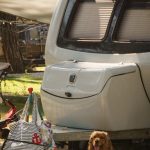Male Vandergrift
How to Upgrade Your RV’s Interior
How to Upgrade Your RV’s Interior: Tips for a Cozy and Functional Space
Are you ready to give your RV a makeover? 🏕️ Whether you’re gearing up for a long road trip or just want to create a more comfortable living space, upgrading your RV’s interior can make all the difference. Dive in to discover practical tips and creative ideas to transform your RV into a cozy home on wheels!
Table of Contents
1. Introduction
2. Start with a Plan 📝
3. Maximize Space with Smart Storage Solutions 📦
4. Refresh Your Color Palette 🎨
5. Upgrade Furniture for Comfort and Style 🛋️
6. Enhance Lighting for Ambiance 💡
7. Add Personal Touches with Decor 🖼️
8. Conclusion
9. FAQs
Start with a Plan 📝
Before you start ripping out cabinets or buying new furniture, take a moment to plan. Consider what you love about your RV and what you’d like to change. Are you looking for more storage, a modern look, or just a fresh coat of paint? Having a clear vision will guide your decisions and help you stay on budget.
Maximize Space with Smart Storage Solutions 📦
Space is at a premium in an RV, so making the most of every inch is crucial. Look into multi-functional furniture, like a bench with storage underneath or a folding dining table. Consider installing shelves above windows and using organizers in cabinets to maximize vertical space. Don’t forget about the often-overlooked areas, like the space under the bed or couch, which can be perfect for storing seasonal items.
Refresh Your Color Palette 🎨
A fresh coat of paint can breathe new life into any space. Opt for light, neutral colors to make the interior feel more spacious and airy. If you’re feeling adventurous, add a pop of color with an accent wall or colorful accessories, such as cushions or curtains. This simple change can dramatically impact the mood and vibe of your RV.
Upgrade Furniture for Comfort and Style 🛋️
Your RV should be a place where you can relax after a day of adventure. Invest in comfortable seating and a supportive mattress. If replacing furniture is not an option, consider reupholstering existing pieces or adding plush throws and cushions to improve comfort and aesthetics.
Enhance Lighting for Ambiance 💡
Good lighting can make your RV feel warm and inviting. Replace dull or outdated fixtures with energy-efficient LED lights. Use a mix of task lighting, such as under-cabinet lights in the kitchen, and ambient lighting, like string lights or dimmable lamps, to create a cozy atmosphere.
Add Personal Touches with Decor 🖼️
Your RV is your home, so it should reflect your personality. Add personal touches with photos, artwork, or travel souvenirs. Consider using removable wallpaper for an easy and non-permanent way to add character. Small plants or indoor herbs can also bring a touch of nature inside.
Conclusion
Upgrading your RV’s interior doesn’t have to be overwhelming or expensive. By focusing on key areas like storage, color, furniture, and lighting, you can create a stylish and functional space that feels like home. So, grab your toolkit and let the transformation begin! 🚐✨
FAQs
Q: How can I make my RV feel more spacious?
A: Opt for light-colored paint and strategic lighting to create the illusion of space. Use multi-functional furniture and smart storage solutions to minimize clutter.
Q: What are some budget-friendly ways to upgrade my RV?
A: Start with small changes like new curtains, cushions, or a fresh coat of paint. DIY projects, such as reupholstering furniture or creating custom storage solutions, can also be cost-effective.
Q: How can I improve the energy efficiency of my RV’s lighting?
A: Replace old bulbs with LED lights, which are more energy-efficient and have a longer lifespan. Consider installing dimmer switches to adjust lighting levels according to your needs.
Q: Is it possible to personalize my RV without permanent changes?
A: Absolutely! Use removable wallpaper, adhesive hooks for hanging decorations, and temporary floor coverings to personalize your space without permanent alterations.
Q: What type of plants are best for an RV?
A: Choose low-maintenance plants like succulents or air plants that can thrive with minimal care. Herbs like basil or mint can also be a great addition for cooking enthusiasts.
RV Life: Sustainable and Eco-Friendly Practices
RV Life: Sustainable and Eco-Friendly Practices
Welcome to the world of RV living! Whether you’re a seasoned nomad or just beginning your journey on the open road, embracing sustainable and eco-friendly practices can make your adventures more rewarding. Not only do you help protect the environment, but you also enhance your travel experiences. Let’s explore some practical and impactful ways to live sustainably while enjoying the RV lifestyle. 🌍
Table of Contents
1. Introduction to Sustainable RV Living
2. Energy Efficiency on the Road
3. Water Conservation Tips
4. Waste Management Strategies
5. Eco-Friendly Travel Destinations
6. Conclusion
7. FAQs
Introduction to Sustainable RV Living
Living sustainably while on the road might seem daunting, but it’s easier than you think! By making small changes, you can significantly reduce your carbon footprint and contribute positively to the environment. Plus, sustainable practices often lead to cost savings, allowing you to travel further and enjoy more adventures.
Energy Efficiency on the Road 🌞
One of the first steps to a sustainable RV life is improving your energy efficiency. Here are a few tips to get you started:
1. Solar Power: Installing solar panels on your RV is a game-changer. They provide a renewable energy source, reducing reliance on fossil fuels. Plus, nothing beats the feeling of powering your gadgets with sunlight! ☀️
2. LED Lighting: Swap out incandescent bulbs for LED lights. They use less energy and last longer, which means fewer replacements and less waste.
3. Energy-Efficient Appliances: Invest in energy-efficient appliances that help conserve power. Look for those with high Energy Star ratings.
Water Conservation Tips 💧
Water is a precious resource, especially when you’re on the road. Here are some ways to conserve it:
1. Install Low-Flow Fixtures: Low-flow showerheads and faucets can drastically reduce water usage without sacrificing comfort.
2. Reuse Gray Water: Consider setting up a system to reuse gray water for tasks like watering plants or flushing toilets.
3. Practice Smart Dishwashing: Use a basin to wash dishes instead of running water continuously. It saves gallons over time!
Waste Management Strategies 🗑️
Managing waste responsibly is crucial for eco-friendly RV living. Here are some strategies to consider:
1. Reduce, Reuse, Recycle: Minimize waste by recycling and reusing materials whenever possible. Carry separate bins for recyclables and compostables.
2. Use Eco-Friendly Products: Opt for biodegradable soaps and cleaning products to reduce your environmental impact.
3. Proper Waste Disposal: Always dispose of waste at designated facilities. Leaving no trace is key to preserving natural beauty.
Eco-Friendly Travel Destinations 🌿
Choosing destinations that prioritize sustainability can enhance your RV experience. Consider visiting national parks that focus on conservation or eco-friendly campgrounds that implement green practices. These destinations not only offer natural beauty but also educate and inspire travelers to live sustainably.
Conclusion
Adopting sustainable and eco-friendly practices in RV life is all about making mindful choices. By focusing on energy efficiency, water conservation, responsible waste management, and choosing eco-friendly destinations, you can enjoy the open road while preserving it for future generations. Happy travels, and may your journey be green and fulfilling! 🌱
FAQs
Q1: How can I make my RV more energy-efficient?
Invest in solar panels, switch to LED lighting, and use energy-efficient appliances to reduce your energy consumption.
Q2: What are some eco-friendly products I can use in my RV?
Consider biodegradable soaps, reusable containers, and eco-friendly cleaning supplies to minimize your environmental impact.
Q3: How do I manage waste responsibly while traveling?
Practice recycling and composting, use eco-friendly products, and always dispose of waste at designated facilities.
Q4: Are there specific destinations that support sustainable RV living?
Yes, many national parks and eco-friendly campgrounds prioritize sustainability and offer amenities that support green living.
Thank you for joining us on this journey toward a more sustainable RV lifestyle. Safe travels! 🚐
How to Deal with RV Breakdowns
How to Deal with RV Breakdowns: A Road Warrior’s Guide 🛠️
There’s nothing quite like the freedom of the open road with your RV, but what happens when your trusty travel companion decides to take an unscheduled break? Fear not, fellow road warrior! 🚐 In this guide, we’ll explore how to handle RV breakdowns with grace and efficiency, ensuring your adventures continue without a hitch.
Table of Contents
1. Understanding Common RV Breakdowns
2. Essential Tools and Supplies to Keep on Hand
3. Step-by-Step Breakdown Response
4. Preventive Maintenance Tips
5. Conclusion
6. FAQs
Understanding Common RV Breakdowns 🔧
Before you hit the road, it’s helpful to know what might go wrong. Some common RV breakdowns include:
1. Tire Blowouts: These can occur due to overloading, under-inflation, or simply wear and tear. Regularly check your tires and maintain proper inflation levels.
2. Engine Trouble: Overheating or failure to start are typical issues. Keep an eye on your engine’s health with regular checks and maintenance.
3. Electrical Failures: This can include battery problems or issues with the RV’s electrical system. Always check connections and ensure your battery is in good shape.
Essential Tools and Supplies to Keep on Hand 🧰
Preparation is key! Here’s a list of must-have tools and supplies:
🔹 Spare tire and jack
🔹 Basic toolkit (wrenches, screwdrivers, pliers)
🔹 Jumper cables
🔹 Multimeter for electrical troubleshooting
🔹 Duct tape and WD-40 for quick fixes
🔹 First aid kit
Step-by-Step Breakdown Response 🛑
When faced with an unexpected stop, follow these steps to stay safe and get back on the road:
1. Stay Calm: Take a deep breath and assess the situation. Panicking won’t help.
2. Safety First: Pull over to a safe spot. Turn on your hazard lights to alert other drivers.
3. Diagnose the Problem: Use your tools to identify the issue. Is it a flat tire, engine trouble, or something else?
4. Quick Fixes: If it’s a minor issue like a flat tire or loose connection, you might be able to fix it on the spot.
5. Call for Help: If the problem is beyond your capability, contact roadside assistance or a local mechanic.
Preventive Maintenance Tips 🛡️
Prevention is better than cure. Regular maintenance can save you from many headaches:
✅ Schedule routine check-ups with a professional mechanic.
✅ Keep your RV clean and inspect it regularly for signs of wear.
✅ Replace worn-out parts promptly to avoid future breakdowns.
Conclusion 🚀
Breakdowns can be a part of RV life, but with the right preparation and mindset, they don’t have to ruin your adventure. Equip yourself with the knowledge and tools needed to handle minor repairs, and always practice preventive maintenance. Happy travels! 🌟
FAQs
Q1: How often should I check my RV tires?
A: It’s wise to inspect your RV tires before every trip and at least once a month for pressure and wear.
Q2: What should I do if my RV engine overheats?
A: Pull over safely, turn off the engine, and let it cool down. Check coolant levels and look for leaks. If necessary, call for assistance.
Q3: Can I handle a breakdown without professional help?
A: Many minor issues, like flat tires or battery problems, can be resolved on your own if you’re prepared. For major issues, it’s best to consult a professional.
The Best RV Detailing Products
The Best RV Detailing Products: Keep Your Home on Wheels Looking New 🚐✨
Owning an RV is all about adventure and freedom on the open road. But let’s face it, keeping your RV looking pristine can be a bit of a challenge. Don’t worry, though! I’ve got you covered with this guide to the best RV detailing products that’ll help you maintain that showroom shine. Whether you’re a weekend warrior or a full-time traveler, these products are essential for every RV enthusiast.
Table of Contents
1. Introduction
2. Exterior Detailing Products
3. Interior Cleaning Essentials
4. Specialty Products for RV Maintenance
5. Conclusion
6. FAQs
Exterior Detailing Products 🧼
The exterior of your RV is constantly exposed to the elements, which can cause wear and tear over time. Here are some must-have products to keep it in top shape:
1. RV Wash and Wax
Choosing a good RV wash and wax product is crucial. Look for a formula that’s gentle on your RV’s surface but tough on dirt. A combination of wash and wax not only cleans but also adds a protective layer, giving your RV a shiny finish.
2. Tire and Wheel Cleaner
Don’t forget the tires! A specialized tire and wheel cleaner will help remove grime and brake dust, keeping your wheels looking fresh and reducing wear. A quick spray and rinse is usually all it takes to make a big difference.
Interior Cleaning Essentials 🧹
Just as important as the exterior, your RV’s interior deserves some TLC. Here are a few products that make cleaning your RV interior a breeze:
1. Multi-Surface Cleaner
A versatile multi-surface cleaner is your best friend inside the RV. It can tackle countertops, cabinets, and even appliances. Make sure it’s safe for all the materials in your RV to avoid damage.
2. Upholstery and Carpet Cleaner
Spills happen, especially when you’re living on the road. A good upholstery and carpet cleaner will help keep your fabrics looking like new, removing stains and odors effectively.
Specialty Products for RV Maintenance 🔧
Beyond the usual cleaning supplies, there are a few specialty products that can help maintain your RV’s longevity:
1. Sealant and Protectant
Regularly applying a sealant to your RV’s roof and seams can prevent leaks and water damage. Look for a UV-resistant formula to protect against sun exposure.
2. Awning Cleaner
Your RV’s awning can quickly become a breeding ground for mold and mildew. An awning cleaner will help keep it clean and extend its life.
Conclusion
Maintaining your RV doesn’t have to be a daunting task. With the right detailing products, you can keep your mobile home looking and feeling fresh. Whether you’re preparing for a long journey or just a weekend getaway, these products are designed to make RV maintenance easy and efficient.
FAQs 🤔
1. Can I use regular car cleaning products on my RV?
It’s best to use products specifically designed for RVs, as they are formulated to handle larger surfaces and the materials common in RV construction.
2. How often should I detail my RV?
It’s a good idea to detail your RV at least twice a year, or more often if you use it frequently. Regular maintenance will help protect your investment.
3. What’s the best way to remove black streaks from my RV?
Black streak removers are specifically designed for this task. Apply according to the product instructions for the best results.
4. Are there eco-friendly RV cleaning products available?
Yes, many brands offer eco-friendly options that are biodegradable and safe for the environment, perfect for conscientious RV owners.
Remember, a clean RV is a happy RV! Safe travels and happy detailing! 🚐✨
RV Life: How to Travel with Pets
RV Life: How to Travel with Pets 🐾
Traveling the open road in your RV can be an exhilarating experience, but what about bringing your furry friends along for the ride? Pet owners know that leaving their pets behind isn’t always an option. Fortunately, RV life offers the perfect opportunity to create lasting memories with your pets by your side. In this guide, we’ll explore how to make RV travel with pets both enjoyable and stress-free.
Table of Contents
1. Preparing Your RV for Your Pet
2. Safety First: Traveling with Pets
3. Comfort and Entertainment on the Road
4. Finding Pet-Friendly Campgrounds
5. Conclusion
6. FAQs
Preparing Your RV for Your Pet 🏠🐶
Before hitting the road, it’s essential to make sure your RV is pet-ready. Start by pet-proofing the interior: secure loose items, block off any small spaces your pet might squeeze into, and ensure that all cleaning supplies and chemicals are stored safely.
Consider setting up a designated pet area. This could be a cozy corner with their bed, a few favorite toys, and easy access to water and food. Creating a familiar space can help reduce anxiety and make your pet feel more at home.
Safety First: Traveling with Pets 🚗🐾
Safety should always be your top priority. When the RV is in motion, it’s crucial to have your pet secured in a crate or with a pet seatbelt. Loose pets can be a distraction and are at risk in the event of sudden stops.
Additionally, always carry your pet’s health records, vaccination details, and a recent photo. In case of an emergency or if they get lost, having this information on hand can be invaluable.
Comfort and Entertainment on the Road 🎾🛋️
Long drives can be tiring for pets, so plan regular stops for bathroom breaks and exercise. Keeping your pet entertained with toys or interactive games can also help pass the time.
If your pet is prone to motion sickness, consult with a vet about preventative measures. Sometimes, adjusting their feeding schedule can also prevent discomfort during travel.
Finding Pet-Friendly Campgrounds ⛺🐕
Not all campgrounds welcome pets, so it’s essential to do your research beforehand. Look for places that offer pet amenities like dog parks or pet-walking trails. Websites and apps dedicated to pet-friendly locations can make this process easier.
When at the campground, always adhere to the rules regarding pets, which often include leash requirements and designated pet areas. This ensures a pleasant experience for everyone.
Conclusion
RV travel with pets can be an incredibly rewarding experience, offering the chance to explore new places with your best friend by your side. With preparation, safety considerations, and a focus on comfort, you and your pet can enjoy the open road together. Happy travels! 🚐❤️
FAQs
Q1: How can I keep my pet calm during RV travel?
A: Creating a familiar space in the RV, using calming aids like pheromone sprays, and ensuring they have their favorite toys can help reduce anxiety.
Q2: What should I do if my pet gets sick during the trip?
A: Consult with a vet beforehand about motion sickness options and carry a pet first-aid kit. If your pet becomes ill, seek out a local veterinarian as soon as possible.
Q3: Are there any specific RV modifications recommended for pet owners?
A: Consider installing pet gates to restrict access to certain areas and removable rugs or covers to protect upholstery from pet hair and accidents.
Q4: How do I find pet-friendly RV parks?
A: Use online resources and apps that specialize in pet-friendly travel, and always call ahead to confirm the park’s pet policies.
Q5: What are some must-have items for traveling with pets in an RV?
A: Essential items include a secure crate or harness, food and water dishes, a pet first-aid kit, toys, and any medications your pet may need.
RV Renovation Ideas: Making Your Space Feel Like Home
RV Renovation Ideas: Making Your Space Feel Like Home
Are you ready to transform your RV into a cozy home on wheels? 🚐 Whether you’re a full-time traveler or a weekend wanderer, creating a comfortable and personalized space is key to enjoying life on the road. In this blog post, we’ll explore practical and creative RV renovation ideas that will make your space feel like home. Let’s dive in!
Table of Contents
1. Maximize Your Space
2. Personalize Your Decor
3. Choose Functional Furniture
4. Enhance Lighting and Ambiance
5. Implement Smart Storage Solutions
6. Conclusion
7. FAQs
Maximize Your Space
When it comes to RV living, making the most out of limited space is essential. Start by evaluating your layout and identifying areas that can be optimized. Consider removing non-essential items and opting for multi-purpose furniture. Using foldable tables and drop-leaf countertops can significantly enhance your space efficiency. 🏡
Personalize Your Decor
Just because you’re on the road doesn’t mean you can’t have a stylish home. Choose decor elements that reflect your personality. Add colorful throw pillows, cozy blankets, and art pieces that speak to you. Peel-and-stick wallpaper can add a splash of color and pattern without the commitment. Remember, it’s all about creating a space that brings you joy and comfort. 🎨
Choose Functional Furniture
Functionality is key in RV furniture. Look for pieces that serve multiple purposes, like a sofa that converts into a bed or a dining table with storage compartments. This not only saves space but also adds convenience. Investing in quality, durable furniture will pay off in the long run as you travel from one destination to another. 🛋️
Enhance Lighting and Ambiance
Lighting can dramatically change the feel of your RV. Opt for LED lights to save energy and add a warm glow. String lights and battery-operated lanterns can create a cozy atmosphere. Consider adding dimmer switches to control the brightness and set the mood, whether you’re reading a book or hosting a dinner. 💡
Implement Smart Storage Solutions
Smart storage solutions are a game-changer in RV living. Use vertical space by installing shelves or hanging organizers. Under-bed storage bins and over-the-door racks can help keep your belongings organized and easily accessible. Don’t forget about the often-overlooked spaces, like the inside of cabinet doors, which can be perfect for hooks or small shelves. 📦
Conclusion
Transforming your RV into a homey haven is all about maximizing space, incorporating personal touches, and choosing functional elements. With these renovation ideas, your RV will not only look great but also feel like the perfect retreat for your adventures. Happy renovating and safe travels! 🛣️
FAQs
Q1: How can I make my RV feel more spacious?
A1: Use multifunctional furniture, maximize vertical storage, and keep the design light and airy to create the illusion of more space.
Q2: What are some cost-effective ways to decorate my RV?
A2: Opt for DIY projects, use peel-and-stick wallpaper, and find decor pieces at thrift stores or online marketplaces.
Q3: How do I choose the right lighting for my RV?
A3: Select energy-efficient LED lights, add dimmer switches for flexibility, and incorporate ambient lighting like string lights or lanterns for a cozy feel.
Q4: Can I paint the walls in my RV?
A4: Absolutely! Painting is a great way to personalize your RV. Just make sure to choose paint suitable for the RV’s material and prepare the surfaces properly.
By following these tips and answers, you’ll be well on your way to creating a space that truly feels like home, no matter where the road takes you. 🌍
How to Secure Your RV: Anti-Theft Tips
How to Secure Your RV: Anti-Theft Tips
Owning an RV is a gateway to adventure and freedom on the open road. However, it also comes with the responsibility of ensuring your investment is safe from theft. Whether you’re a weekend warrior or a full-time RVer, securing your RV is crucial. In this guide, we’ll explore effective anti-theft tips to keep your home on wheels safe and sound. Let’s dive in! 🏕️
Table of Contents
1. Understanding the Risks
2. Choosing the Right Parking Spot
3. Installing Security Systems
4. Locking Up Tight
5. Adding Visual Deterrents
6. FAQs
Understanding the Risks
Before we jump into the solutions, it’s vital to understand what you’re up against. RVs are attractive targets for thieves due to their value and the potential belongings inside. Understanding these risks helps you take the necessary precautions. Consider factors like location, visibility, and the time your RV is left unattended.
Choosing the Right Parking Spot
The first line of defense is where you park your RV. Always opt for well-lit, populated areas. If you’re at a campground, choose spots near the entrance or those with security cameras. If you’re parking in a less secure area, try to park near other RVs; there’s safety in numbers! 🅿️
Installing Security Systems
Modern technology offers a plethora of options to safeguard your RV. Consider installing a GPS tracker, alarm system, or even a surveillance camera. These systems not only deter thieves but also help recover your RV if it’s stolen. Remember, a noisy alarm can scare off an intruder faster than a silent system.
Locking Up Tight
It might sound obvious, but you’d be surprised how often RVs are left unlocked. Invest in high-quality locks for all doors and windows. Consider wheel locks or tire boots as an added layer of security. And don’t forget to lock up any external compartments too!
Adding Visual Deterrents
Visual deterrents can be just as effective as physical ones. Use signs or stickers that indicate your RV is protected by a security system. A visible steering wheel lock can also make thieves think twice. The goal is to make your RV look like a difficult target. 🚫
Conclusion
Securing your RV doesn’t have to be a daunting task. By understanding the risks, choosing strategic parking spots, investing in security systems, and using robust locks and visual deterrents, you can significantly reduce the chances of theft. Remember, the peace of mind knowing your RV is secure allows you to focus on what truly matters—enjoying your adventures! 🌟
FAQs
Q: Are RV security systems worth the investment?
A: Absolutely! A good security system can deter theft and help recover your RV if it’s stolen.
Q: What should I do if my RV is stolen?
A: Report it to the police immediately and provide them with any tracking information from your security system.
Q: Can I use regular home locks on my RV?
A: While some home locks may fit, it’s best to use locks specifically designed for RVs for maximum security.
Q: How effective are wheel locks?
A: Wheel locks are very effective as they make it difficult for a thief to drive away with your RV.
Q: Is it safe to leave valuables in my RV?
A: It’s best to keep valuables out of sight and secure, or take them with you when leaving your RV unattended.
Top 5 Gadgets Every RVer Needs
Top 5 Gadgets Every RVer Needs 🚐
Embarking on an RV adventure is a thrilling experience that combines the freedom of the open road with the comforts of home. Whether you’re a seasoned traveler or a newbie exploring the RV lifestyle, having the right gadgets can make all the difference. In this blog post, we’ll explore the top five gadgets every RVer needs to enhance their journey. Let’s dive in! 🌟
Table of Contents
1. Portable Solar Panels 🌞
2. GPS Navigation Systems 🗺️
3. Compact Kitchen Appliances 🍳
4. Wi-Fi Boosters 📶
5. Water Filtration Systems 🚰
FAQs
1. Portable Solar Panels 🌞
The sun is your best friend when you’re on the road! Portable solar panels are a must-have gadget for RVers who love to camp off-grid. These panels allow you to harness the power of the sun to charge your RV’s battery, keeping your appliances running smoothly without relying on noisy generators. Plus, they’re eco-friendly, which is a win-win for nature lovers. Just imagine sipping your morning coffee while knowing your gadgets are powered by the sun. Perfection! ☕
2. GPS Navigation Systems 🗺️
Getting lost might be part of the adventure, but having a reliable GPS navigation system can save you time and stress. Modern GPS systems designed for RVs consider your vehicle’s size and weight, providing routes that avoid low bridges and narrow roads. With features like real-time traffic updates and campground locators, you’ll be well-equipped to explore new destinations confidently. Let your GPS guide the way, so you can focus on the journey! 🚙💨
3. Compact Kitchen Appliances 🍳
Cooking on the road doesn’t mean sacrificing your favorite meals. Compact kitchen appliances like a multi-cooker or a portable induction cooktop can transform your RV kitchen into a culinary haven. These gadgets are perfect for whipping up quick meals without taking up too much space. Whether you’re preparing a hearty breakfast or a simple dinner, having the right tools makes all the difference. Bon appétit! 🍽️
4. Wi-Fi Boosters 📶
Staying connected is important, even when you’re miles away from civilization. A Wi-Fi booster can enhance the signal strength of nearby networks, allowing you to stay in touch with loved ones or stream your favorite shows. This gadget is especially useful in remote areas where internet access might be limited. With a reliable connection, you can work remotely, plan your next stop, or simply browse the web. Surf’s up! 🌐
5. Water Filtration Systems 🚰
Clean water is essential for any adventure, and a portable water filtration system ensures you have access to safe drinking water wherever you go. These systems filter out impurities, making it easy to refill your water tanks from various sources. It’s a practical and cost-effective solution that gives you peace of mind on the road. Stay hydrated and healthy with fresh, clean water! 💧
Conclusion
Equipping your RV with these essential gadgets can significantly enhance your travel experience. From harnessing solar power to ensuring a steady internet connection, these tools help you make the most of your journey. So, pack your bags, grab your gadgets, and hit the road for an unforgettable adventure. Happy travels! 🚐✨
FAQs
Q: Can I use regular solar panels for my RV?
A: While you can use regular solar panels, portable solar panels are specifically designed for RV use, offering more convenience and flexibility.
Q: Are GPS systems for RVs expensive?
A: The cost varies, but investing in a quality RV-specific GPS can save you headaches down the road by providing safer, more efficient routes.
Q: How do I choose the right water filtration system?
A: Consider the size of your RV, your water usage, and the types of contaminants you want to filter out. Researching products and reading reviews can help you make an informed decision.
Q: Do Wi-Fi boosters work in all areas?
A: Wi-Fi boosters enhance existing signals, so their effectiveness depends on the availability of nearby networks. In very remote locations, a satellite internet solution might be necessary.
Q: Are compact kitchen appliances energy-efficient?
A: Many compact kitchen appliances are designed to be energy-efficient, making them suitable for RV use. Look for models with energy-saving features to optimize power consumption.
How to Stay Connected on the Road: Internet Options for RVers
How to Stay Connected on the Road: Internet Options for RVers
Life on the road offers a sense of freedom that’s hard to match. Whether you’re working remotely, streaming your favorite shows, or keeping in touch with family, staying connected is crucial. But what are the best internet options for RVers? Let’s dive into the world of on-the-road connectivity and make sure you’re never offline when you need to be!
Table of Contents
1. Mobile Hotspots 📶
2. Satellite Internet 🛰️
3. Campground Wi-Fi 🚐
4. Cellular Data Plans 📱
5. Public Wi-Fi Hotspots 🌐
6. FAQs ❓
Mobile Hotspots 📶
Mobile hotspots are one of the most popular options for RVers. These small devices allow you to connect multiple devices to the internet via a cellular network. It’s like having a mini internet router right in your RV! They work in areas with strong cellular coverage and are perfect for moderate internet usage.
Satellite Internet 🛰️
For those venturing into remote areas, satellite internet might be the solution. While it’s typically more expensive and slower than other options, it provides internet access where cellular networks might not reach. Consider satellite internet if you plan to camp off the beaten path frequently.
Campground Wi-Fi 🚐
Many campgrounds offer Wi-Fi as part of their amenities. While this is a convenient option, the connection can be slow or unreliable, especially during peak seasons. It’s a good option for light browsing but not ideal for heavy online activities like streaming or video conferencing.
Cellular Data Plans 📱
Using your smartphone’s data plan is another viable choice. Many carriers offer plans with large data caps or even unlimited data options, which can be tethered to other devices. Be mindful of potential throttling after reaching a certain data limit, which can slow down your speeds significantly.
Public Wi-Fi Hotspots 🌐
Public Wi-Fi hotspots, such as those found in cafes or libraries, can be a lifesaver. These are perfect for quick connections or when you’re in a pinch. Remember to use a VPN to secure your connection and protect your data from prying eyes.
Conclusion
Staying connected on the road has never been easier, thanks to the variety of internet options available to RVers. Whether you choose a mobile hotspot, satellite internet, or rely on campground Wi-Fi, there’s a solution to fit every lifestyle and need. Consider your travel habits, budget, and internet usage to find the perfect option for you.
FAQs ❓
Q: Can I use my home internet service in my RV?
A: Generally, home internet services aren’t portable. However, some ISPs offer mobile solutions that might work for RVing. Check with your provider for options.
Q: Is satellite internet reliable for video calls?
A: Satellite internet can be reliable, but latency issues can affect real-time activities like video calls. It’s best for basic browsing and emails.
Q: How do I secure my RV’s internet connection?
A: Use strong passwords, enable WPA3 encryption on your devices, and consider using a VPN to secure your internet connection, especially when using public Wi-Fi.
Remember, the road is yours to explore, and with the right internet setup, you can stay connected every mile of the journey. Happy travels! 🚐✨
Top RV Clubs and Associations You Should Join
Top RV Clubs and Associations You Should Join
If you’ve ever felt the call of the open road, the camaraderie of fellow travelers, and the allure of new adventures, then joining an RV club might just be your next great move! 🚐✨ Whether you’re a seasoned road warrior or a newbie exploring the RV lifestyle, there’s a community out there waiting to welcome you with open arms. In this post, we’ll explore some of the top RV clubs and associations you should consider joining, providing you with insider tips and a sense of belonging.
Table of Contents
1. Why Join an RV Club?
2. Good Sam Club
3. Escapees RV Club
4. Family Motor Coach Association (FMCA)
5. Xscapers
6. Conclusion
7. FAQs
Why Join an RV Club?
Joining an RV club offers numerous benefits that can enhance your travel experiences. From discounts on campsites and services to social gatherings and educational resources, these clubs provide a support system on the road. Plus, it’s a fantastic way to meet like-minded individuals who share your passion for adventure! 🌍💬
Good Sam Club
The Good Sam Club is one of the largest and most well-known RV clubs. With over two million members, it’s a community that’s hard to beat in terms of resources and support. Members enjoy discounts on fuel, camping, and RV accessories. Plus, you get access to their comprehensive road service, ensuring peace of mind during your travels. 🛠️⛺
Escapees RV Club
The Escapees RV Club is perfect for those who value both community and independence. Founded in 1978, this club focuses on providing its members with a network of support, offering mail forwarding services, discounts, and a wealth of knowledge through their educational programs. A unique feature of Escapees is their emphasis on boondocking, allowing you to explore off-the-beaten-path destinations. 📚🌲
Family Motor Coach Association (FMCA)
If you’re traveling in a motorhome, the FMCA is tailored specifically for you! This association provides a plethora of resources, including a monthly magazine, an emergency medical evacuation program, and numerous social events throughout the year. Membership also grants you access to valuable discounts on RV-related products and services. 🚌📰
Xscapers
A subgroup of the Escapees, Xscapers is designed for working-aged RVers who balance remote work with travel. This dynamic community offers support for digital nomads, with meet-ups and online resources that cater to a younger, tech-savvy audience. If you’re working on the road, Xscapers might be the perfect fit for you! 💻🌐
Conclusion
Joining an RV club can greatly enhance your travel experiences, providing you with resources, discounts, and most importantly, a community of fellow adventurers. Whether you’re looking for social connections, educational resources, or practical travel tips, there’s an RV club out there that’s right for you. So, pack up your RV and hit the road with confidence, knowing you have a supportive network behind you. 🌟🚍
FAQs
What are the benefits of joining an RV club?
Joining an RV club can offer discounts on camping and services, provide educational resources, and connect you with a community of fellow RV enthusiasts.
Which RV club is best for full-time travelers?
The Escapees RV Club and its subgroup, Xscapers, are excellent choices for full-time travelers, offering resources and support for both retirees and working nomads.
Do RV clubs offer roadside assistance?
Yes, many RV clubs, like the Good Sam Club, offer roadside assistance as part of their membership benefits, providing peace of mind on your travels.
Are there RV clubs specifically for families?
Yes, the Family Motor Coach Association (FMCA) caters to families traveling in motorhomes, offering a range of family-friendly events and resources.
Can I join more than one RV club?
Absolutely! Many RVers choose to join multiple clubs to take advantage of a variety of benefits and communities. It’s all about finding what works best for your travel lifestyle.









